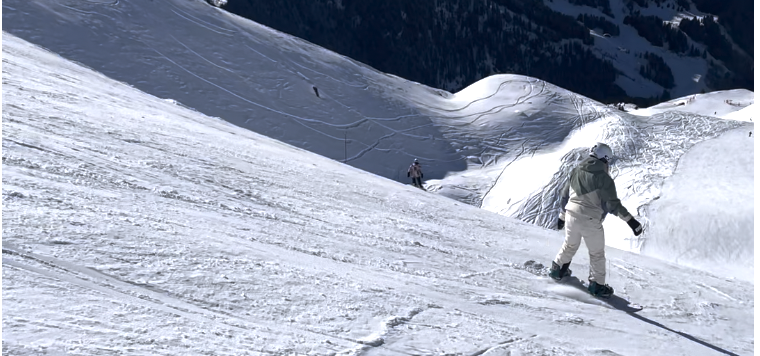
What Are the Basic Snowboard Skills? (AKA: How to Not Faceplant Your Way Down the Mountain)
Share
What Are the Basic Snowboard Skills? (AKA: How to Not Faceplant Your Way Down the Mountain)
So, you’ve decided to strap both feet to a single plank and throw yourself down an icy slope. Welcome to snowboarding - a sport that’s equal parts art, chaos, and “how is this even physically possible?” Before you can start sending it off side hits and pretending you’re in a Red Bull edit, you’ll need to master the basics. And yes, I know “basics” sounds boring, but trust me - skip them and you’ll spend most of your trip lying in the snow wondering why your wrists hurt.
1. The Art of Standing Up (Without Looking Like You’re Wrestling a Seal)
Before you carve, jump, or even move, you’ve got to stand up on the board. Sounds easy? Try doing it strapped in on a slope while your friends laugh from the chairlift. Learn how to get up from sitting (dig your heels in, rock forward, and push with your hands) and from lying face-down (toes dug in, hands pushing off the snow). It’s not glamorous, but it’s survival. For some of us that are less experienced or have sticky knees, this can be the hardest bit. just throw yourself up.. once you're on your feet its easy (ish)
2. Balance -Your New Religion
Snowboarding is basically controlled falling. Your whole job is to keep your weight balanced over the board - not too far forward (faceplant), not too far back (butt plant). Keep your knees bent, hips loose, and your head looking where you want to go. This last point is key, your board will go in the direction you look.. so don't look at tree's, chairlift stanchions or other mountain users, look at where you want to go and thats it. And stay loose, keep those knees bent and arms loosey-goosey.. The second you stiffen up, the snow wins.
3. The Toe Edge & Heel Edge Thing
These are your bread and butter. Your heel edge is when you lean back into your heels to slow down or stop; your toe edge is when you lean forward onto your toes. Learn to trust these edges they’re what stop you from doing the “accidental luge” down the hill.
4. Side Slipping — AKA: The Snowplough’s Cooler Cousin
Side slipping is sliding sideways down the slope on either your toe or heel edge. It’s how you control speed before you can actually link turns. You’ll do it a lot in your first few days, and yes, it feels like you’re just slowly sanding the mountain with your board. But it’s the start of real control.
5. The Falling Leaf
No, it’s not a TikTok dance. The falling leaf is moving diagonally down the hill, then switching direction without turning the board fully. You zig-zag your way down, staying in control and building confidence. Think of it as speed dating with both your edges you get to know them without committing to full turns.
6. Linking Turns (The Holy Grail)
This is the point where snowboarding stops feeling like a bad life choice. Linking turns means transitioning smoothly from heel edge to toe edge (and back again) so you’re actually riding the slope instead of surviving it. Once you can link turns without panic, you’re officially a snowboarder.
7. Controlling Speed (Without the ‘Sit Down & Pray’ Method)
Eventually, you’ll want to slow down without flopping onto your butt. This comes from making your turns bigger and using your edges to control descent. The better you get at this, the less you’ll feel like a runaway fridge on a hill.
8. Reading the Terrain
Beginner slopes aren’t all flat and friendly. There’ll be dips, rolls, and random icy patches designed to test your sanity. Learning to look ahead and plan your line (instead of staring at your nose and panicking) will make your riding smoother and way less scary.
9. Stopping Gracefully (Or At Least Trying To)
Everyone can stop… eventually. The trick is doing it without crashing into someone’s skis or ending up upside down in the fencing. Use your heel or toe edge to dig in gradually until you’re still. Bonus points if you manage it without spraying snow directly into a stranger’s face.
10. Getting Comfortable with Falling (Because You Will)
Here’s the thing: you will fall. A lot. The skill is learning how to fall without destroying yourself. Keep your arms in (no flailing), try to land on your forearms or thighs instead of wrists, and slide it out if you can. If you’re not falling occasionally, you’re probably not learning. the weird thing about snowboarding is that if you fall while going fast you tend to just slide out and come to a stop with no damages.. but just try slipping over while you're barely moving, well thats broken wrist and or coccyx territory. so if in doubt, go balls out!
Final Thought
Master these basics, and the mountain will open up for you. Skip them, and you’ll be that guy in the rental line complaining snowboarding is “too hard” after one day. Stick with it - because once you get past the first bruises and wobbles, it’s the best feeling in the world.